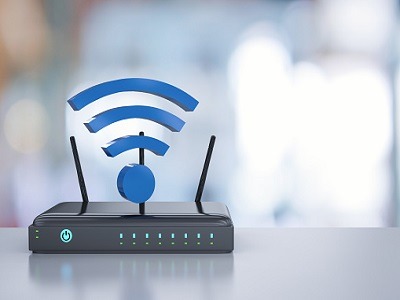#UnlimitedWireless
Text
Tethering and Hotspots: Tools for Staying Connected Anywhere, Anytime

In an increasingly networked world, the demand for continual connectivity has become an essential component of modern existence. The ability to access the internet at any time and from any location is critical for business, enjoyment, or staying in touch with loved ones. Tethering and mobile hotspots have developed as vital tools for consumers and organizations alike, guaranteeing that being connected is no more a matter of location but of choice.
Tethering is the technique of sharing an internet connection across devices. The primary device, which is typically a smartphone or tablet, acts as an internet gateway, allowing additional devices to connect to
Tethering can be accomplished in numerous ways. A USB cable is used to connect a smartphone or tablet to another device. The linked gadget connects to the internet using the primary device's mobile data connection. A mobile hotspot, also known as Wi-Fi tethering, turns a smartphone into a wireless router. Other devices, such as laptops or tablets, may access the internet by connecting to the hotspot's Wi-Fi network. Bluetooth tethering uses Bluetooth technology to link devices. While it has a shorter range than Wi-Fi tethering, it is enough to preserve battery life on both devices.
Mobile hotspots, sometimes known as "Mi-Fi" devices, are portable, independent devices with a single purpose: to provide internet access. These gadgets have a number of advantages. Hotspots are small and portable, fitting inside a pocket or purse. This makes them excellent for anyone on the go, whether they are traveling, working remotely, or simply looking for internet outside of their home or workplace. A mobile hotspot can usually support numerous connections at the same time. As a result, it is a versatile option for small groups or families who need to connect many devices. Users may often configure settings such as Wi-Fi network names and passwords, security features, and data use monitoring on hotspot devices.
Tethering and mobile hotspots provide several advantages in all aspects of life and business. The development of remote work has increased the necessity to stay connected when traveling. Tethering and hotspots allow employees to operate from nearly any location with an internet connection. While visiting unfamiliar regions, travelers can utilize tethering or hotspots to secure access to maps, online guides, translation software, and communication tools. Tethering and hotspots can provide a lifeline for communication in instances where standard internet connectivity is absent or hindered, making them crucial tools during emergencies. Tethering and hotspots are used by businesses as backup connectivity options to maintain continued operations, particularly when primary internet connections fail.
In conclusion, tethering and mobile hotspots have revolutionized how we remain connected. They provide a sense of independence by not tying us to a particular spot for internet access. These technologies have become indispensable in both personal and professional lives, allowing users to connect when and where they choose and making the digital world available at any time and from any location. Tethering and mobile hotspots have developed as indispensable companions in an era where connection is critical, providing the ability to stay connected wherever our adventures take us.
Visit our website https://www.unlimitedwirelessplans.net/.
0 notes
Text
@PaulRyan #realwallwifi Discovered new innovation #UNLIMITEDWireless capablities. @JimmyPanetta @skiheavenly @NationalForests #Apple #applenews #Verizon @AmbrosxxJory @JoryJoker @Forbes @jory
@PaulRyan #realwallwifi Discovered new innovation #UNLIMITEDWireless capablities. @JimmyPanetta @skiheavenly @NationalForests #Apple #applenews #Verizon @AmbrosxxJory @JoryJoker @Forbes @jory
@PaulRyan #realwallwifi
Discovered new innovation #UNLIMITEDWireless capablities.
@JimmyPanetta @skiheavenly @NationalForests #Apple #applenews #Verizon
@AmbrosxxJory @JoryJoker
@Forbes @jory
source https://twitter.com/ambrosxxJORY/status/985008720181542912
View On WordPress
0 notes
Text
Wireless Wonders: The Serendipitous Discovery of Wi-Fi

Wi-Fi has assimilated into our daily lives in the linked world of today. You may effortlessly surf the internet wirelessly no matter where you are, including at home, a coffee shop, or an airport. Have you ever thought about the origins of this amazing technology, though? The history of Wi-Fi's invention is one of inventiveness, creativity, and change in science.
Wi-Fi, which stands for "Wireless Fidelity," is a technology that enables wireless internet connectivity and communication between electronic devices. Its origins can be found in the 1940s when engineers and scientists were already investigating the potential of wireless communication. But Wi-Fi as we know it today didn't start to take shape until the late 20th century.
The history of radio waves and microwaves and the invention of Wi-Fi are closely related. Microwave technology was developed in the 1940s as a result of research into the properties of microwaves, particularly as they applied to radar systems used in World War II.
The field of computers developed during the 20th century. The necessity for wireless communication increased as a result of the development of the internet and the rising demand for linked products. To make this a reality, scientists and engineers started developing strategies.
Wi-Fi technology improved quickly during the following several years. It quickly became a common function in laptops and portable devices, and establishments and public areas started to provide Wi-Fi hotspots. The 1999-founded Wi-Fi Alliance was instrumental in establishing interoperability and security standards.
In conclusion, Wi-Fi was not created in a single "Eureka!" moment, but rather as the consequence of years of scientific inquiry, creative study, and unplanned exposure to microwave technology. We can now connect, work, and interact with one another with unprecedented ease thanks to Wi-Fi, which has since become a crucial aspect of our lives. This coincidental progression from radar and microwave systems to the wireless marvel of Wi-Fi exemplifies the amazing and unpredictably changing ways in which technology may advance and alter our world.
Visit our website at https://www.nextelle.net/.
#UnlimitedWireless#wirelessconnection#WirelessLAN#WirelessNetwork#LAN#Wifi#Internetconnection#Internetconnectivity#NextelleWireless
0 notes
Text
Exploring the Diverse Types of Wireless Connectivity

Wireless communication has become the new standard in a world where wires and cables are fast becoming obsolete. Wireless technologies have taken over as the mainstay of modern communication, from our smartphones and laptops to smart home appliances and industrial uses.
The most popular type of wireless communication is probably Wi-Fi. It makes it possible for devices to connect to local networks and the internet without using physical wires. The most widely used frequency bands for Wi-Fi are the 2.4 GHz and 5 GHz bands. We remain linked thanks to technology at home, in coffee shops, airports, and many other public places.
Our smartphones and other mobile devices are connected wirelessly by cellular networks, such as 3G, 4G, and the more recent 5G. We may use these networks to access the internet, send SMS, and make calls while we are on the move. The switch to 5G promises to be even quicker.
Bluetooth is a wireless short-range technology that makes it easier to connect peripherals like speakers, headphones, and headphones to smartphones, tablets, and PCs. Bluetooth is ideal for IoT applications and personal area networks since it runs on a low-power, short-range protocol.
Designed for low-power, short-range devices like smart home sensors and controls, Zigbee is a wireless communication standard. It is frequently utilized in IoT applications and home automation systems where extended battery life and dependability are crucial.
NFC is a wireless short-range technology used for device pairing, data transfer, and contactless payments. Everything from credit cards to public transit systems use this technology, which is the brains behind services like Apple Pay and Google Wallet.
RFID technology employs radio waves for wireless communication to identify and track items. It is frequently used in access control systems, supply chain management, and even as a way to track luggage and pets.
A wireless protocol called LoRa was created for low-power, long-range applications. It is frequently utilized in Internet of Things (IoT) devices that must interact across long distances, including those used in environmental monitoring and agriculture.
Devices or sites in remote locations without access to terrestrial networks can be connected using satellite communication. worldwide telecommunications, such as television broadcasts, GPS systems, and worldwide internet access in remote areas, depend on this technology.
Infrared communication is still utilized, albeit less frequently than other wireless technologies in some niche applications. This line-of-sight technology is used in IR remote controls for TVs, projectors, and some data transfer techniques.
UWB is a new technology that is renowned for both its high bandwidth and low energy usage. It is being used more and more in programs like secure device authentication, accurate indoor positioning, and real-time location systems.
In conclusion, each technology in the wide and ever-evolving field of wireless communication is created to satisfy particular demands and use cases. From the widespread use of cellular networks and Wi-Fi to the specialized uses of RFID, Zigbee, and UWB, wireless technologies continue to change how we work and live. Understanding these many forms of wireless connectivity is essential to making educated decisions and realizing the full potential of our interconnected future as our world gets more and more connected.
Visit our website at https://www.nextelle.net/.
#UnlimitedWireless#wirelessconnection#WirelessLAN#WirelessNetwork#LAN#Wifi#Internetconnection#Internetconnectivity#NextelleWireless
0 notes
Text
WiFi vs. Cellular Data: Unveiling the Benefits

Whether it's for work, entertainment, or socializing, we rely on the internet to fulfill our digital needs. When it comes to connecting to the online realm, two primary options dominate the scene: WiFi and cellular data. Each has its own set of benefits, catering to different circumstances and preferences.
WiFi, often available in homes, offices, and public places, offers numerous advantages. First and foremost, it's typically faster and more reliable than cellular data. With a stable WiFi connection, you can enjoy seamless streaming, smooth video calls, and rapid downloads. WiFi also tends to have no data limits or caps, allowing for unlimited usage without additional charges. Moreover, connecting multiple devices simultaneously is effortless, making it ideal for households or offices with multiple users.
On the other hand, cellular data provides mobility and accessibility. With cellular networks expanding their coverage, you can stay connected even when away from WiFi hotspots. This is especially beneficial for travelers, commuters, and those living in areas with limited WiFi availability. Cellular data plans offer flexibility, allowing you to access the internet wherever and whenever you need it. Additionally, advancements in technology have resulted in faster cellular networks, approaching WiFi speeds in some cases.
Ultimately, the choice between WiFi and cellular data depends on your circumstances and requirements. If you prioritize speed, reliability, and unlimited usage, WiFi is the way to go. Conversely, if mobility, accessibility, and flexibility are your key concerns, cellular data is your best bet. In an ideal scenario, having both options at your disposal ensures a seamless internet experience, regardless of your location.
WiFi and cellular data each bring distinct benefits to the table. While WiFi reigns supreme in terms of speed and reliability, cellular data offers the advantage of mobility and accessibility. The ongoing advancements in technology continue to bridge the gap between the two, blurring the boundaries and providing users with the best of both worlds. Ultimately, understanding your needs and choosing the option that aligns with them will ensure you stay connected in the most convenient and efficient manner possible.
Visit our website at https://www.nextelle.net/
#UnlimitedWireless#wirelessconnection#WirelessLAN#WirelessNetwork#LAN#Wifi#Internetconnection#Internetconnectivity#NextelleWireless
0 notes